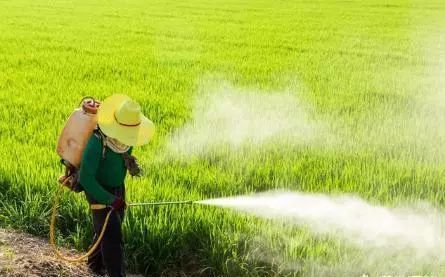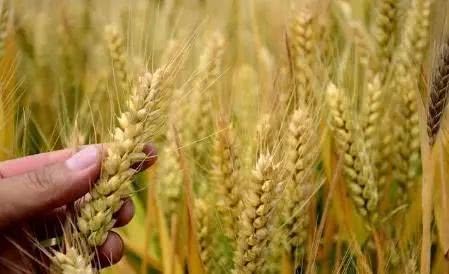Pesticides should be used differently according to different fungi and pathogens of crop diseases.

First of all, after the crop is infected by fungi, there will be different shapes of disease spots, and the disease spots will produce different colors of mildew or powder, no peculiar smell. After being damaged by bacteria, the disease spot on the leaf has no mildew or powder, so we can judge whether the crop is affected by fungal infection or bacterial infection, so as to take different countermeasures. Other than that.
Bacterial disease also has several characteristics, that is, the spot is very thin, easy to rupture or perforation; roots, stems and leaves are easy to rot and smell; after the fruit is infected by bacteria, there are scabs and protuberances on the surface. Among the infectious diseases of crops, more than 80% are fungal diseases.
In addition to the harm of bacteria and fungi, there are viral diseases and physiological diseases as well as drug injuries. viral diseases are generally shown on tender leaves, but there are not many kinds, but they are harmful and difficult to control, while physiological diseases are generally not contagious.
So what are the fungal diseases?
Powdery mildew, rust, root rot and stem rot caused by root swelling fungus and powdery scab, downy mildew, powdery mildew, root rot and stem rot, Fusarium wilt and Verticillium wilt caused by spores, anthrax caused by Alternaria, dry rot caused by crustacean, and so on, are all fungal diseases. Fungal diseases can produce hyphae and spores in humid environment.
What are the bacterial diseases?
The symptoms of bacterial diseases are purulent, which will cause necrosis, decay, deformity and other symptoms.
At present, fipronil is the most widely sterilized, the most efficient and the most expensive bactericidal ingredient in the world. The price of fipronil is about 1.5 million yuan per 100 tons.
In fact, it eventually leads to the death of bacteria by inhibiting the transfer related to glucose phosphorylation and inhibiting the growth of fungal mycelium. It can effectively control wheat fishy smut, snow mildew, sheath blight, root rot, total erosion, glume blight, stem smut, corn bacterial wilt, stem base rot, quenching disease; cotton rot, red rot, anthracnose, black root disease, seed rot; soybean peanut rot, root rot; rice seedling disease, root rot; rape black shank; potato rot.
In addition to using chlorpromazil to control fungal diseases, chlorothalonil and mancozeb are effective in controlling sudden drop disease and downy mildew, and tocopherol, carbendazim and prochloraz can effectively control bacterial wilt, Fusarium wilt and brown spot. Organic copper, inorganic copper, streptomycin and mesophyte can control powdery mildew, powdery mildew, leaf wilt, bacterial wilt and so on.
Bacterial diseases are generally controlled by agricultural chain, leaf pyruzole, trichloride, mesophyte, copper preparation, neomycin, thiophanate methyl and so on. Wuningmycin (tetramycin) is a competitive biological fungicide because of its high activity in the control of bacterial diseases and non-toxic to humans and animals. When thiobacillus copper is diluted 500-600 times to control bacterial spots on vegetables, melons and fruits, the control effect is better. Allicin is also a common drug to control bacterial diseases.
Here is science to promote agriculture, welcome to add attention, with you to grow knowledge.
- Prev

Pigeon soup is nutritious, but pigeons are especially killed by drunkenness or suffocation.
First of all, it is stated that if you are a pigeon lover, this article may not be suitable for you. I have heard the saying that "one pigeon is better than nine chickens", and the pigeon meat tonic has also been mentioned by his mother. There was a sister in the family who gave birth to a child.
- Next

Wheat prices are expected to rise slightly in the third and fourth quarters of this year. Surplus grain can be sold at an optional date.
Wheat prices are expected to rise in the third and fourth quarters, but not by much. It is recommended that it be sold at the end of September and the beginning of October. The reasons are as follows. An analysis of the reasons for the modest increase in wheat prices after August. Since the beginning of this year, the price of wheat has changed from.
Related
- Wuhan Hospital Iron Tree Blooming Result Was Instantly Frightened by the Gardener Master
- Which variety of camellia is the most fragrant and best? Which one do you like best?
- What is the small blue coat, the breeding methods and matters needing attention of the succulent plant
- Dormancy time and maintenance management of succulent plants during dormancy
- Minas succulent how to raise, Minas succulent plant pictures
- What are the varieties of winter succulent plants
- How to raise succulent plants in twelve rolls? let's take a look at some experience of breeding twelve rolls.
- Attention should be paid to water control for succulent plants during dormant period (winter and summer)
- Watering experience of twelve rolls of succulent plants
- Techniques for fertilizing succulent plants. An article will let you know how to fertilize succulent plants.

